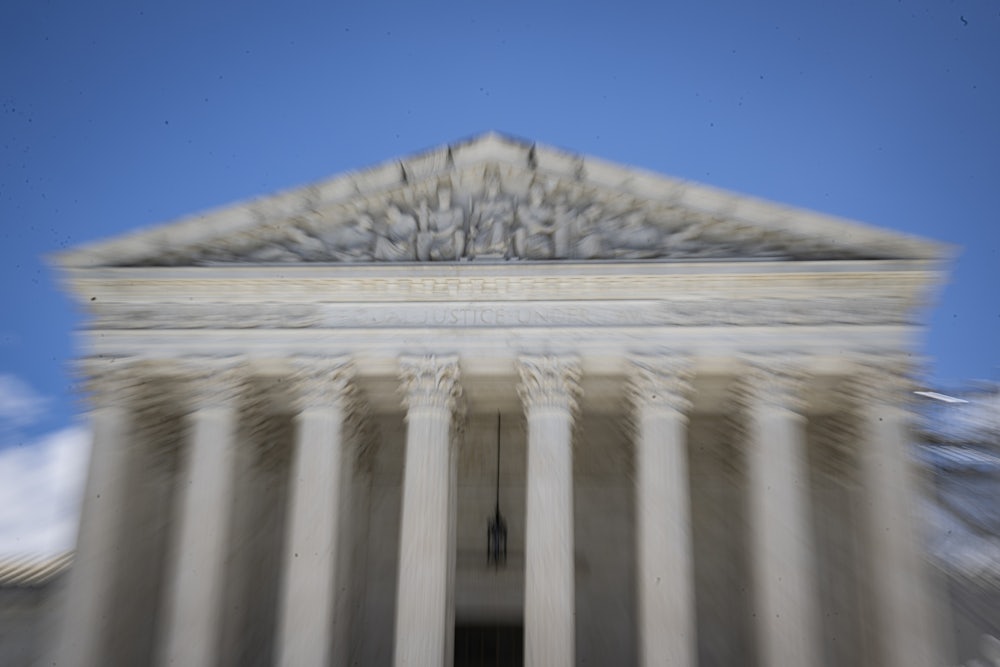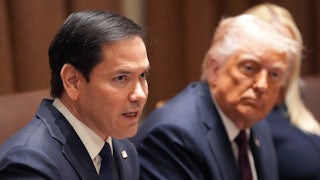No one should forget that the Supreme Court’s opinions have real-world consequences for Americans. This term, the court kicked the can down the road on the abortion cases, leaving the law in uncertainty. It reversed dozens of January 6 decisions, and allowed some gun challenges to flourish, protecting military-style weapon-fire devices that even Donald Trump banned, and then made it harder to prosecute Donald Trump, solidifying its reputation in the minds of the American public as a court taken over by the MAGA wing of the Republican Party.
For long-term effect, however, the real stunner for lawyers is a case called Relentless v. Department of Commerce (also Loper Bright Enterprises v. Raimondo). It appears to be a minor spat about fishing regulation, but it is a gargantuan case, to quote Justice Gorsuch. Last Friday, the Supreme Court struck down Chevron v. Natural Resources Defense Council, making it more difficult to regulate, both for agencies and for Congress, upending 40 years of case law covering every law and every regulation in America, reversing a case that had thousands of citations. Despite the majority’s efforts to calm the waters by saying some precedents remain, the case is a tremendous gift to corporate lawyers who will tweak those cases and find new ones to undo a vast array of existing decisions protecting American food, drugs, health, not to mention nuclear power, hurricane warnings, identity theft, and anything else subject to commonsense regulation. Even Justice Scalia was happy for a long time with the old rule struck down in Relentless, but this is not Justice Scalia’s court anymore.
The Dobbs decision overturning Roe v. Wade awoke the nation to the fact that the Trump court was dramatically different. But it’s deeper than any individual decision. To put it in lay terms: The old umpire who called balls and strikes has been replaced by a new umpire, and that umpire has decided to dictate new rules for the strike zone, the size of the plate, and even the field. This court is setting new rules of the game.
For decades, the far right has wanted to change the rules-that-determine-the-rules. Relentless is part of that strategy: It involves a legal doctrine that sets the rules for the rules, about who and how agencies and Congress interpret law. Rather than deferring to the democratic branches, the court has decided that only it can set these rules. The Biden administration argued that the case would cause a “convulsive shock” to the legal system. A less polite way of putting it is that Relentless is a full-employment law for corporate lawyers wishing to challenge regulations—any regulation. Just like the new “major questions” doctrine, it gives judges new power to stop regulators, and it forces Congress to write impossibly precise instructions to agencies, lest courts nullify their plans over a misplaced punctuation mark (and yes, these justices have recently debated punctuation because of their affection for textual precision).
Americans should realize that the justices have turned willful blindness to consequences for citizens into a virtue, not a vice. Justice Clarence Thomas writes that judges should be “ashamed” to “lay bare consequentialist” reasoning in constitutional cases involving the income tax. Justice Neil Gorsuch chides Justice Brett Kavanaugh for “raw consequentialist” reasoning that should “play no role” in judging. In climate cases, the court has repeatedly rejected agency arguments based on the consequences to the environment. Of course, this often turns out to be a kind of “self-hating consequentialism” as the same judges turn around and violate their own rule. But their statements are all there for people to see: If taken at face value, they reflect the view that judges have a moral imperative not to consider how their actions affect Americans. That is not traditional judging: Even Blackstone, an eighteenth-century British writer, used large consequences as a warning sign that more prudent interpretations deserved pride of place.
This strategy has been a long time in the making: It begins in the 1980s, when the Reagan administration birthed the court’s MAGA judicial philosophy and sold it to the Federalist Society. The preferred philosophy (known as originalism or textualism) aims to change the rules-that-determine-the rules by changing the way in which judges “interpret” law. The umpire does not want to enforce the existing rules, he wants to dictate a changed set of rules. As anyone who has ever worked in Congress knows: If you have a choice between the rules and the substance, pick the rules, and you will always win. While liberals have played a “substance” game, with groups focused on particular issues like abortion or guns, the far right has played a “rules” game. That game will continue to win for minoritarian causes, unless the political branches, namely Congress and the president, step up to push back and write democratic rules back into law.
However, the conservative justices’ philosophy—“originalism” and “textualism”—is not what it appears to be. It is framed as a “traditional” reading of the law, but in reality, it is MAGA-level antidemocratic. No lawyer disputes that history and text are relevant to legal analysis. But the problems with originalism and textualism are about what they leave out of judging. They leave out traditional judicial virtue: slow change, following precedent, prudent decisions, and a healthy respect for majoritarian decisions. But to these justices, if text and history say X, then precedent or prudence or what majorities want do not seem to count.
This is how the court overruled Dobbs, created a new right to bear arms in Heller, and now, in Relentless, has told agencies when and how they can regulate. None of these decisions could have existed without a philosophy that tells courts to ignore precedent and rejects law’s inherently conservative method of moving by analogy, slowly, case by case, to ensure the very stability that regulated entities like markets and businesses want.
For all its talk of “traditionalism,” the court’s new philosophy is just that—new. Most lawyers of my vintage and seniority were never taught a thing about it. Big data confirms it: The largest database on historical legal sources ever constructed, at Georgetown Law’s Interpretation Lab, has found that invoking historical sources is new, not old, beginning not in 1787 but hundreds of years later, in the 1980s Rehnquist court, reaching a peak in 2019.
In the short term, the cost for the country is “disruption.” Courts ideally cool the political passions, but this court’s judicial philosophy is hot, not cool. Adrian Vermeule, a conservative Harvard professor, has argued persuasively that the Supreme Court’s philosophy has lost any sense of “common good,” or what others might claim is just plain common sense. In its place are judges who blind themselves to the real-life consequences of their decisions, whether about guns or abortion or climate, because their “philosophy” of text and history command them to do so.
When a nonelected court thwarts both the Congress and agencies, not to mention the American people, it arrogates to itself the power of the few against the many. History shows that persistently minoritarian courts ultimately fail and go down in history very poorly. But sadly, for a slumbering public to roar that “We, the People” are in charge, not the court, it can take decades. In the case of a 40-hour workweek and banning child labor, the Supreme Court blocked them for decades. It can even take war: The Dred Scott decision spawned a war because it denied the political branches a means to compromise.
It is time
for Democrats in Congress and President Biden to play for the rules. And it is time
for the American public to understand that the way to fight the court is bigger
than any single issue: It is to fight for the traditional strike zone.






